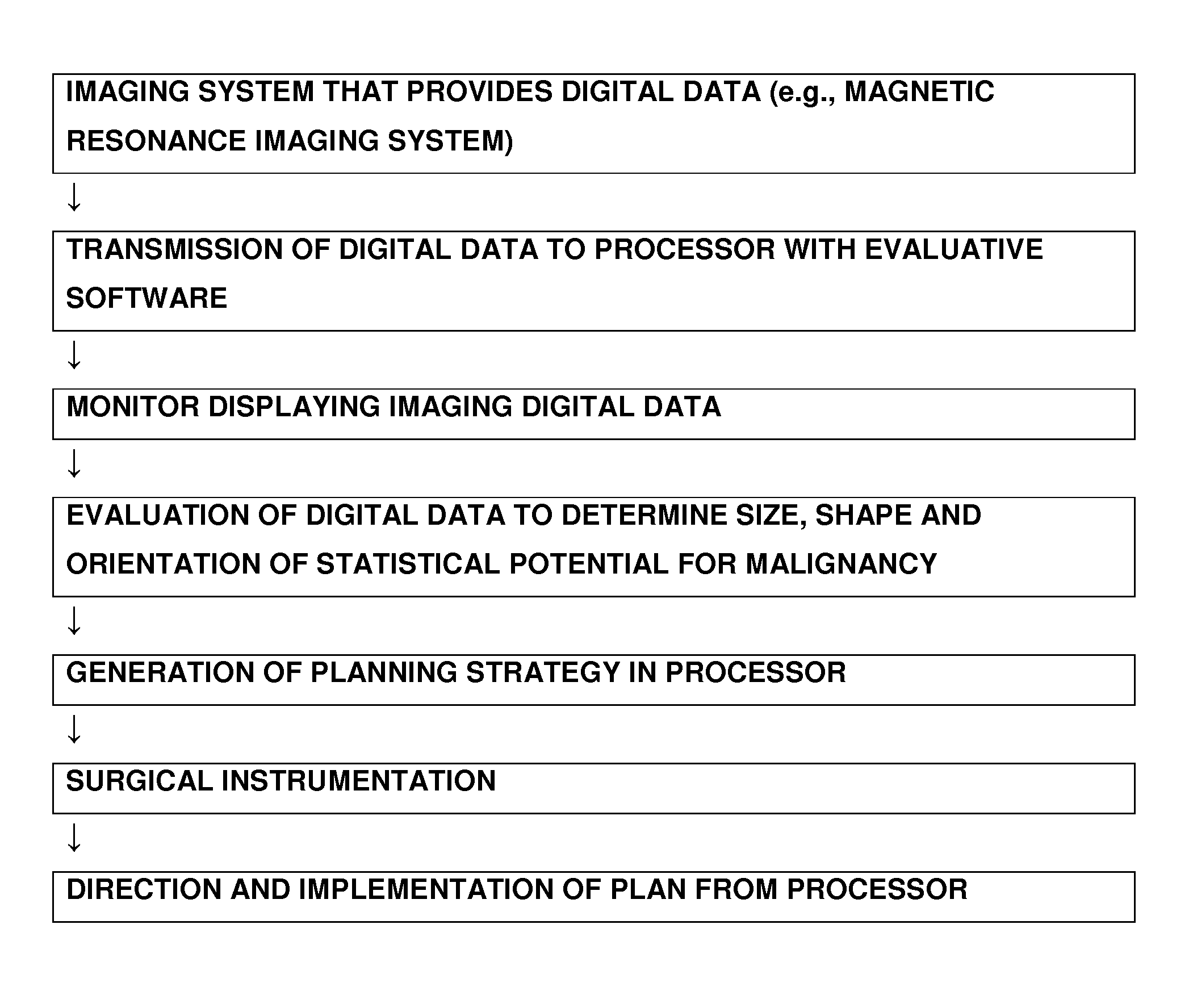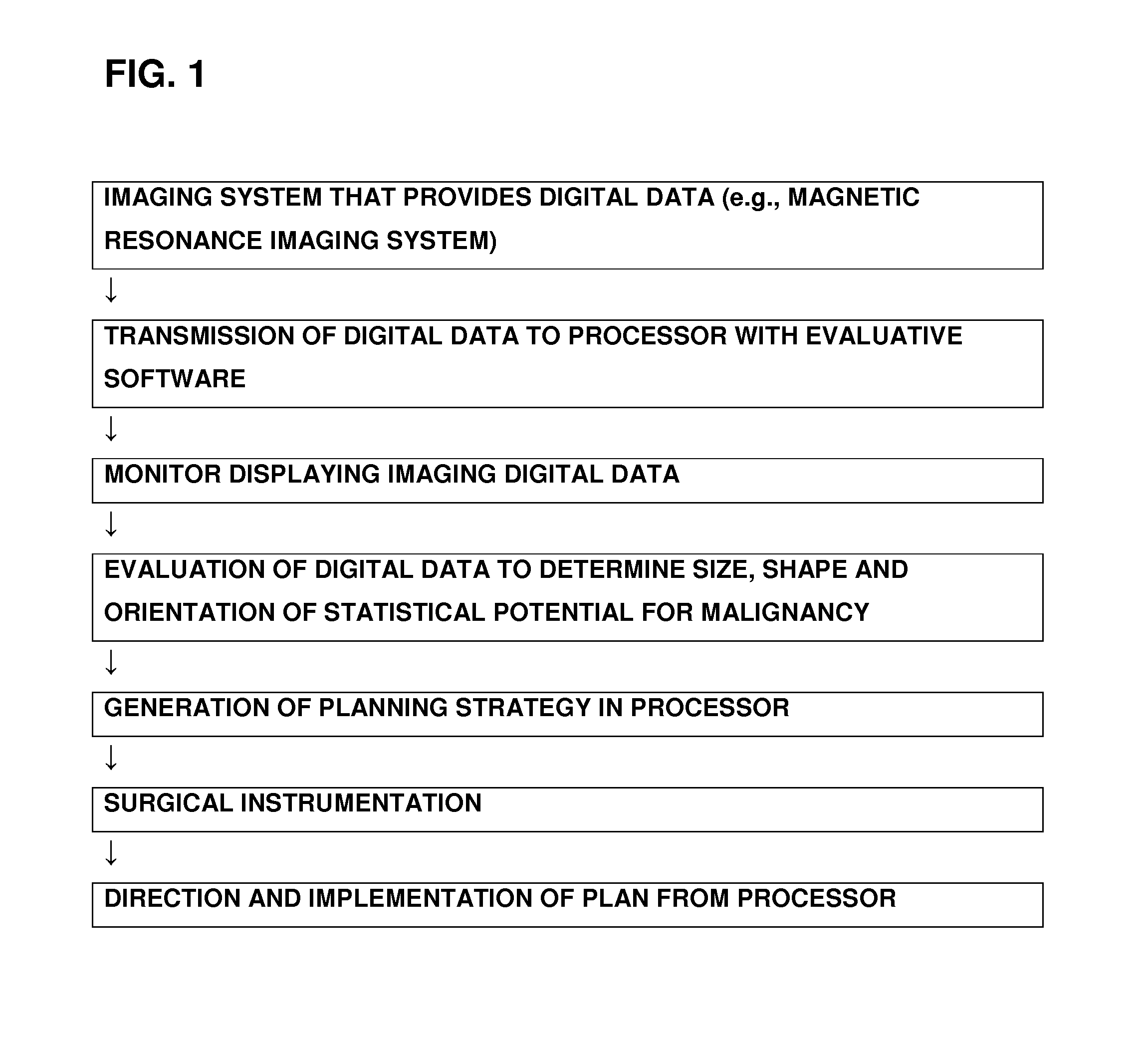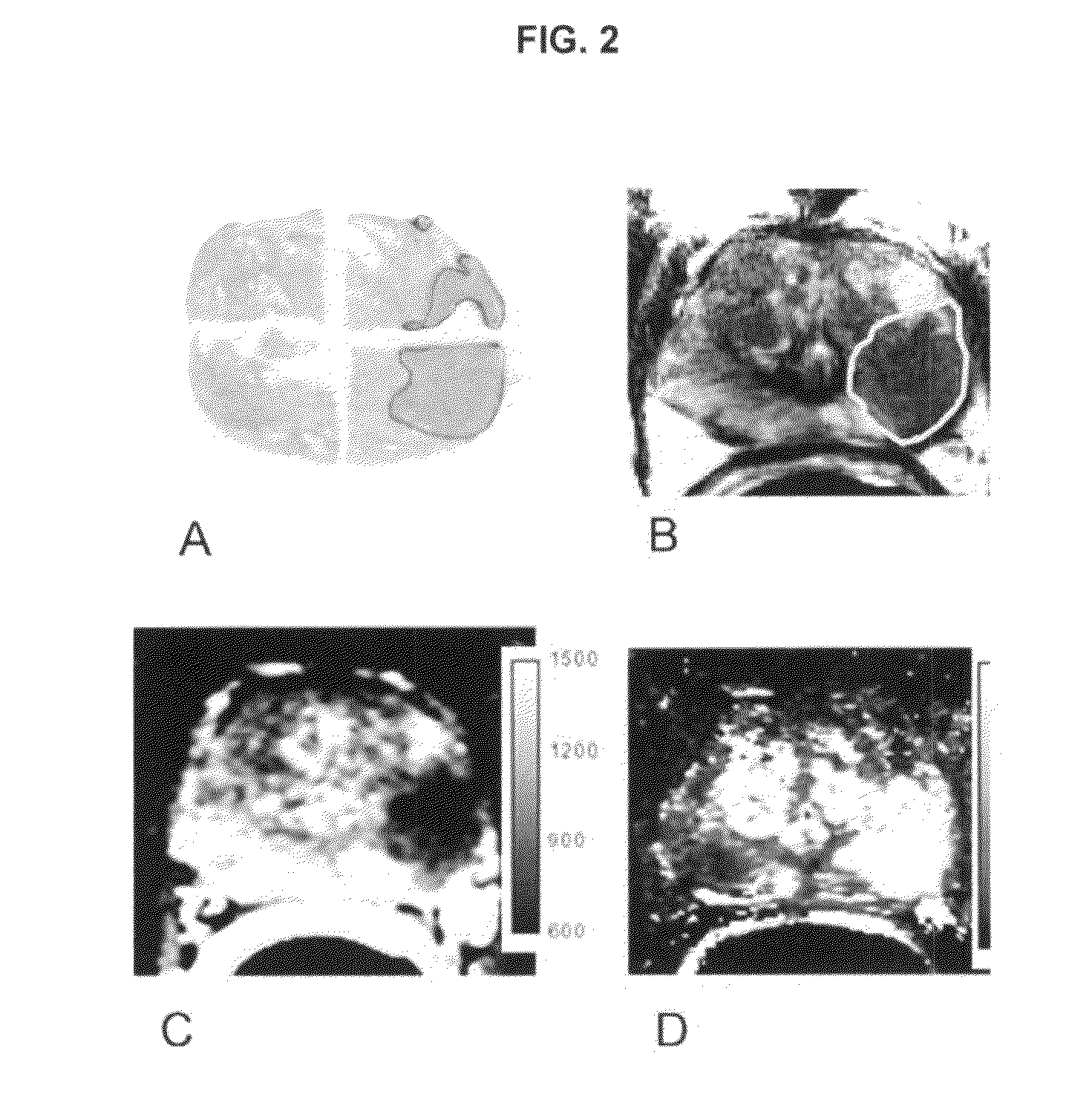System and method of guided treatment within malignant prostate tissue
a prostate cancer and guided treatment technology, applied in the field of systems and methods of planning treatments, can solve the problems of radical intervention using standard treatments that might offer more harm than good, treatment is not completely curative or devoid of side effects, and cannot be completely correct, so as to improve the accuracy of imaging and localization, prevent unnecessary damage to non-malignant tissue, and improve the delivery of ablative therapy
- Summary
- Abstract
- Description
- Claims
- Application Information
AI Technical Summary
Benefits of technology
Problems solved by technology
Method used
Image
Examples
Embodiment Construction
[0033]The technology described herein relates generally to apparatus, systems and methods for the treatment of cancer by removal of cancerous (malignant) tissue and cells, while attempting to minimize the removal of or damage to benign (non-cancerous) cells and tissue. The technology described herein is particularly useful for the treatment of prostate cancer where visualization of the tumors, cancerous tissue and differentiation from benign tissue has proven to be difficult by other means. The technology includes, by way of a non-limiting description, at least one imaging system (particularly an imaging system that directly provides digital image information or an analog imaging system having a processor that can convert analog imaging data into digital data) that provides data for differentiating between malignant and non-malignant tissues, especially within the prostate region of a patient. The system may also enable guided (automated, robotic, processor plan directed) delivery o...
PUM
 Login to View More
Login to View More Abstract
Description
Claims
Application Information
 Login to View More
Login to View More - R&D
- Intellectual Property
- Life Sciences
- Materials
- Tech Scout
- Unparalleled Data Quality
- Higher Quality Content
- 60% Fewer Hallucinations
Browse by: Latest US Patents, China's latest patents, Technical Efficacy Thesaurus, Application Domain, Technology Topic, Popular Technical Reports.
© 2025 PatSnap. All rights reserved.Legal|Privacy policy|Modern Slavery Act Transparency Statement|Sitemap|About US| Contact US: help@patsnap.com



